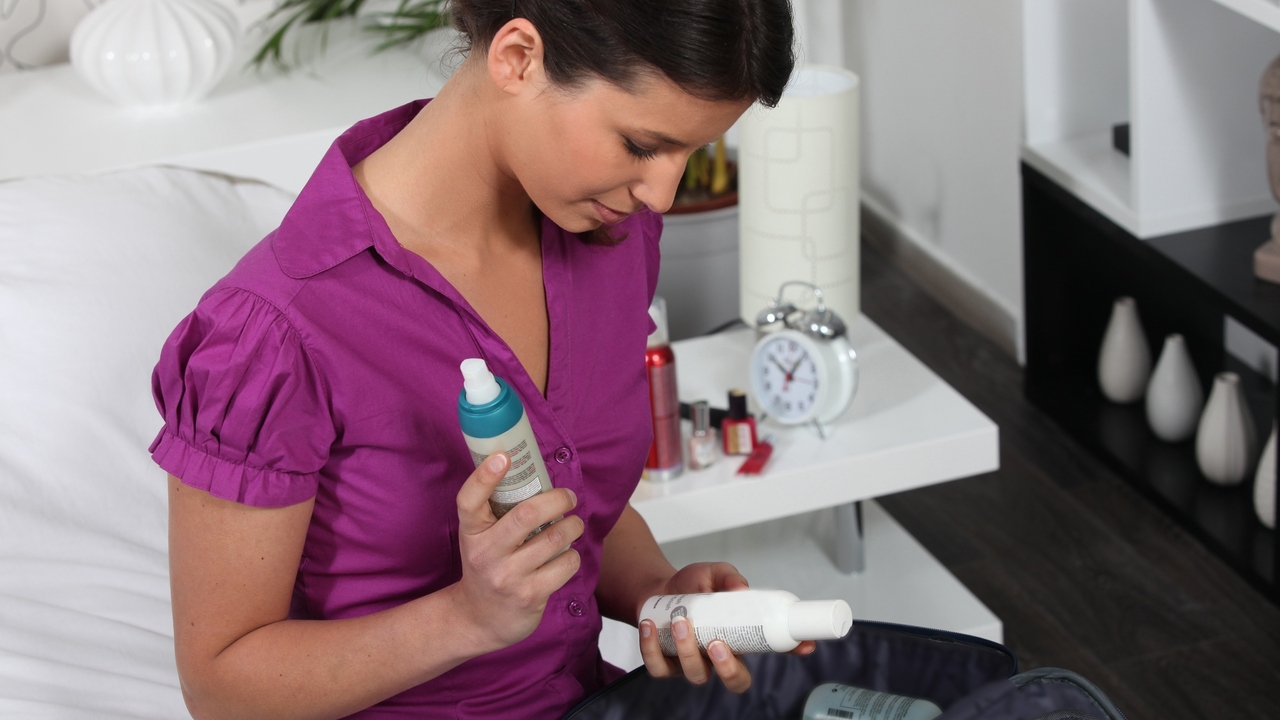 Angel Nieto/PhotoSpin
Angel Nieto/PhotoSpin
Menopause is a natural part of the aging process for women. But for some of us, that process might start sooner than normal due to our exposure to certain chemicals.
According to a new study from the Washington University School of Medicine, women with high levels of certain chemicals reached menopause two to four years earlier than women with lower levels of those same chemicals.
Menopause is defined as the time when a woman has not had a period for 12 consecutive months. The average age most women have their last period is 51 years old. But some women stop having periods in their forties while others have periods well into their fifties.
Menopause occurs due to the natural decline in the body’s production of the hormones estrogen and progesterone. Perimenopause is the time leading up to menopause that occurs as hormone levels begin to decline.
Some medical procedures such as a hysterectomy to remove the uterus can result in menopause because periods are not possible after the uterus is gone.
However, you may not have symptoms of menopause unless your ovaries were removed as well. Removal of both ovaries results in menopause because estrogen is produced by the ovaries.
Smoking is also known to affect the onset of menopause. Women who smoke are more likely to reach menopause at a younger age.
Researchers working on the study tracked blood and urine levels of 111 chemicals that are believed to affect the production and distribution of hormones in women. According to the Washington University study, some of these chemicals are linked to a younger onset of menopause.
"Chemicals linked to earlier menopause may lead to an early decline in ovarian function, and our results suggest we as a society should be concerned," senior author Dr. Amber Cooper, an assistant professor of obstetrics and gynecology, said in a news release.
The chemicals included in the study were mostly man-made substances. They included known reproductive toxins and chemicals that are known to take more than a year to break down.
One chemical group specifically named in the study is phthalates, which are used to make plastics more flexible and harder to break.
Phthalates are used in hundreds of products ranging from vinyl flooring, detergents and plastic clothes such as raincoats, to personal care products including shampoos, soaps, hair sprays and nail polish. Phthalates are also found in some children’s toys.
According to the U.S. Centers for Disease Control and Prevention, phthalate exposure is widespread in the population of the United States. Women tend to have higher urinary levels than men of metabolites from phthalates used in personal care products.
Other chemicals tested in the Washington University study included phytoestrogens which are a type of estrogen derived from eating certain plants, and dioxins/furans which are byproducts of industrial combustion.
The research team analyzed data from 1,442 menopausal women who were representative of a population of nearly 9 million women. The information was part of a survey of over 31,000 people conducted by the CDC from 1999-2008.
The menopausal women in the study had not used estrogen replacement therapy and had not had their ovaries surgically removed. The average age of the women was 61 years old.
Fifteen specific chemicals were believed to have a significant connection to early menopause, and were flagged for further study.
According to the research report, some of the chemicals studied had previously been linked to other medical conditions including certain types of cancer, metabolic syndrome, and early onset of puberty in younger girls.
The researchers expressed concern over the connection between chemical exposure and early menopause, explaining that decreased ovarian function can make getting pregnant more difficult. It can contribute to the earlier development of heart disease, osteoporosis and other health conditions.
Cooper explained that the average person cannot control their exposure to these chemicals because they are present in soil, water and air. She advocates education to help people understand the risks of chemical exposure and to be more aware of what is in the household products we all use.
Cooper also shared recommendations to reduce chemical exposure, including microwaving food in glass or paper containers rather than plastic. She also recommends studying the ingredients in the products we use, especially personal care items, cosmetics and food packaging.
The researchers noted that while most of the chemicals studied are banned in the United States, they are still produced in other parts of the world and are present in the environment.
Sources:
Fox News. Everyday chemical exposure linked to earlier menopause. Web. May 7, 2015.
http://www.foxnews.com/health/2015/02/02/everyday-chemical-exposure-link...
National Institute on Aging. Menopause. Web. May 7, 2015.
http://www.nia.nih.gov/health/publication/menopause
Centers for Disease Control and Prevention. Phthalates. Web. May 7, 2015.
http://www.cdc.gov/biomonitoring/phthalates_factsheet.html
Reviewed May 8, 2015
by Michele Blacksberg RN
Edited by Jody Smith





Add a CommentComments
There are no comments yet. Be the first one and get the conversation started!